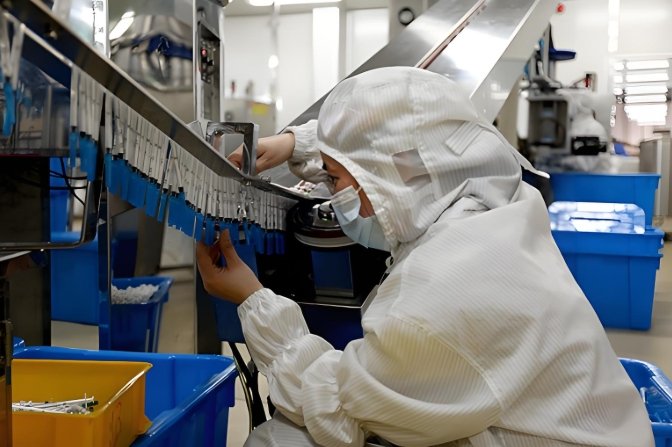
Outsourcing medical injection molding is growing worldwide. Companies seek cost savings, advanced technology, and specialized expertise. Mold makers play a critical role in ensuring quality, efficiency, and compliance. Understanding global trends helps manufacturers stay competitive.
1. Why Companies Outsource Medical Injection Molding
1.1 Cost Reduction
- Lower labor costs in some regions.
- Reduced capital investment in equipment.
- Bulk production lowers per-unit costs.
1.2 Access to Advanced Technology
- Leading outsourcing companies invest in high-tech equipment.
- AI, automation, and IoT improve efficiency.
- Smart factories enhance precision.
1.3 Faster Time to Market
- Outsourcing allows rapid prototyping.
- Experienced mold makers optimize production speed.
- Faster regulatory approvals with expert manufacturers.
1.4 Focus on Core Business
- Reduces in-house manufacturing burden.
- Allows companies to concentrate on R&D and marketing.
- Streamlines supply chain management.
2. Leading Countries in Medical Injection Molding Outsourcing
2.1 China
- Large-scale production capabilities.
- Competitive pricing on tooling and molds.
- Advanced automation and robotics integration.
2.2 India
- Lower labor costs than Western markets.
- Strong presence in pharmaceutical device manufacturing.
- Rapidly expanding medical molding industry.
2.3 Mexico
- Proximity to the U.S. reduces shipping costs.
- Growing skilled workforce in medical plastics.
- Faster turnaround for North American markets.
2.4 United States
- High standards in medical device manufacturing.
- Advanced injection molding technologies.
- Nearshoring trend increasing demand for domestic production.
2.5 Germany
- Precision engineering expertise.
- Strong regulatory compliance.
- High-quality mold manufacturing.
3. Trends Driving Medical Injection Molding Outsourcing
3.1 Growth in Minimally Invasive Medical Devices
- Increased demand for small, precision-molded parts.
- High-performance polymers replace metal components.
- Outsourcing firms specialize in micro-molding.
3.2 Sustainable Manufacturing Practices
- Recyclable and biodegradable medical plastics.
- Energy-efficient molding machines.
- Green supply chains for eco-friendly production.
3.3 Smart Manufacturing and Industry 4.0
- AI-driven quality control reduces defects.
- IoT-connected machines improve efficiency.
- Predictive maintenance lowers downtime.
3.4 Rising Demand for Customization
- More companies require specialized components.
- Outsourced mold makers offer flexible production solutions.
- Shorter lead times for customized medical devices.
3.5 Global Supply Chain Diversification
- Companies reduce dependency on a single country.
- Multi-region manufacturing lowers geopolitical risks.
- Hybrid models combine nearshoring and offshoring.
4. Challenges in Outsourcing Medical Injection Molding
4.1 Quality Control Risks
- Some regions have inconsistent production standards.
- Companies must audit suppliers regularly.
- AI-powered inspections help ensure quality.
4.2 Regulatory Compliance Complexity
- Different countries have varying medical regulations.
- Compliance with FDA, ISO 13485, and CE is required.
- Choosing a certified mold maker reduces compliance risks.
4.3 Intellectual Property Protection
- Risk of design theft when outsourcing overseas.
- NDAs and patents help protect proprietary designs.
- Working with trusted manufacturers minimizes risks.
4.4 Logistics and Supply Chain Disruptions
- Shipping delays affect production timelines.
- Companies must have alternative suppliers.
- Regional manufacturing hubs reduce transport risks.
4.5 Hidden Costs
- Import tariffs and duties increase expenses.
- Poor quality requires rework, adding costs.
- Clear contracts prevent unexpected charges.
5. How to Choose the Right Outsourcing Partner
5.1 Verify Industry Certifications
- Check for ISO 13485 and FDA compliance.
- Ensure the manufacturer meets medical industry standards.
5.2 Assess Production Capabilities
- Evaluate equipment, automation, and process control.
- Look for experience in high-precision medical molding.
5.3 Review Past Client Success
- Request case studies from potential partners.
- Speak with other companies about their experience.
5.4 Secure Supply Chain Reliability
- Ensure the partner has backup suppliers.
- Check lead times and delivery track records.
5.5 Implement Strong Contracts
- Define quality standards in agreements.
- Include confidentiality clauses for IP protection.
6. The Future of Medical Injection Molding Outsourcing
6.1 Nearshoring Growth
- More companies moving production closer to home.
- Reduces reliance on distant suppliers.
6.2 AI-Powered Supply Chain Management
- AI predicts demand and material needs.
- Automated tracking improves logistics.
6.3 Sustainable and Biodegradable Materials
- Demand for eco-friendly medical plastics increasing.
- Recyclable polymers will dominate the market.
6.4 Digital Twin Technology
- Virtual simulations test designs before production.
- Reduces prototyping costs and speeds up manufacturing.
6.5 Blockchain for Supply Chain Transparency
- Tracks materials from sourcing to delivery.
- Prevents fraud and ensures compliance.
Outsourcing medical injection molding offers cost savings, advanced technology, and faster production. However, it comes with risks like quality control, regulatory challenges, and supply chain disruptions. Mold makers must adapt to new trends like smart manufacturing, sustainability, and digital integration. By carefully selecting the right outsourcing partner, companies can maximize efficiency while maintaining high-quality standards.
